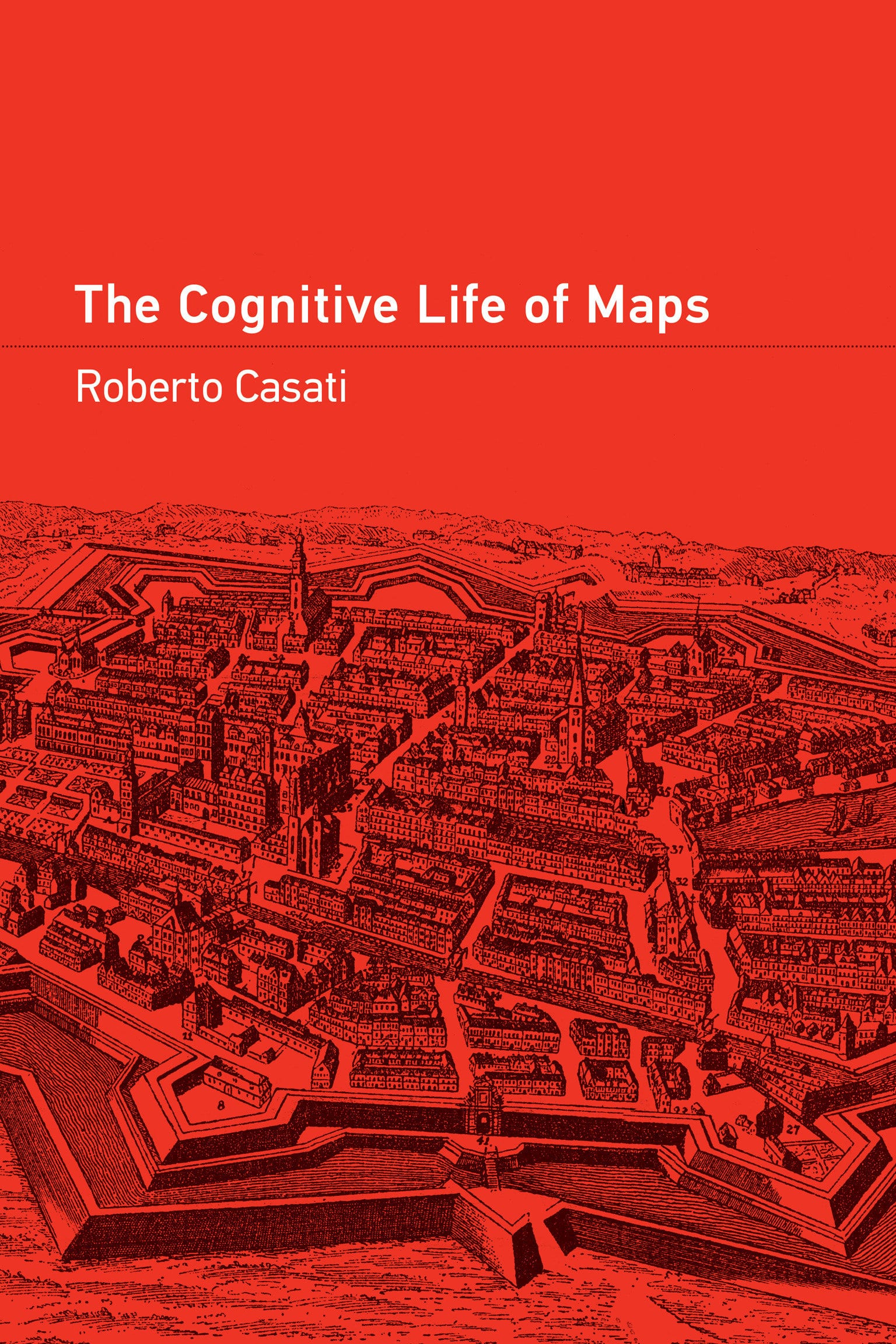The Cognitive Life of Maps
33.00 JOD
Please allow 2 – 5 weeks for delivery of this item
Description
The “mapness of maps”—how maps live in interaction with their users, and what this tells us about what they are and how they work.In a sense, maps are temporarily alive for those who design, draw, and use them. They have, for the moment, a cognitive life. To grapple with what this means—to ask how maps can be alive, and what kind of life they have—is to explore the core question of what maps are. And this is what Roberto Casati does in The Cognitive Life of Maps, in the process assembling the conceptual tools for understanding why maps have the power they have, why they are so widely used, and how we use (and misuse) them.Drawing on insights from cognitive science and philosophy of mind, Casati considers the main claims around what maps are and how they work—their specific syntax, peculiar semantics, and pragmatics. He proposes a series of steps that can lead to a precise theory of maps, one that reveals what maps have in common with diagrams, pictures, and texts, and what makes them different. This minimal theory of maps helps us to see maps nested in many cognitive artifacts—clock faces, musical notation, writing, calendars, and numerical series, for instance. It also allows us to tackle the issue of the territorialization of maps—to show how maps can be used to draw specific spatial inferences about territories. From the mechanics of maps used for navigation to the differences and similarities between maps and pictures and models, Casati’s ambitious work is a cognitive map in its own right, charting the way to a new understanding of what maps mean.
Additional information
| Weight | 0.42 kg |
|---|---|
| Dimensions | 1.55 × 15.55 × 22.86 cm |
| PubliCanadation City/Country | USA |
| by | |
| Format | Paperback |
| Language | |
| Pages | 256 |
| Publisher | |
| Year Published | 2024-5-14 |
| Imprint | |
| ISBN 10 | 0262547082 |
| About The Author | Roberto Casati is Director of the Jean Nicod Institute and Professor at EHESS (School of Advanced Studies in the Social Sciences) in Paris. He is the coauthor of The Visual World of Shadows, Parts and Places, and Holes and Other Superficialities (all MIT Press). |
| Other text | “The Cognitive Life of Maps is a triumph. Casati is a trustworthy and adventurous guide to this most important cognitive terrain. Never dogmatic, but always opinionated, this book is carefully argued and beautifully written. The topic is maps, but really this is a book about our cognitive lives, and as such it makes original and exciting contributions to philosophical and empirical studies of the human mind.”—Alva Noë, UC Berkeley, author of Action in Perception and The Entanglement: How Art and Philosophy Make Us What We Are “The Cognitive Life of Maps provides a double model. It is a model of how to bring each of metaphysics, cognitive science, and epistemology to bear on a topic—external maps—with each discipline's contribution illuminating that of the others. It is also a model of presentation: Casati's chatty style leads the reader smoothly into the deepest issues about maps and their cognitive role without any loss of rigor.”—Christopher Peacocke, Columbia University |
| Table Of Content | Acknowledgments ixAn Overview 11 A Toolbox and the Mechanics 112 The Central Features of Maps: Systematicity, Hypergenerativity 413 Pictures and Maps, Pictures as Maps, and Some Other Maps 834 Maps, Navigation, and Situation: Red Dots, Green Dots 1095 Maps and Models 1336 Clockfaces 1517 Music Notation as Map 1678 Organizers as Maps 1819 Concluding Remarks: The Cognitivie Life of Maps 201Appendix: Maps in the Brain? 213Notes 217References 225Index 239 |
Only logged in customers who have purchased this product may leave a review.






Reviews
There are no reviews yet.